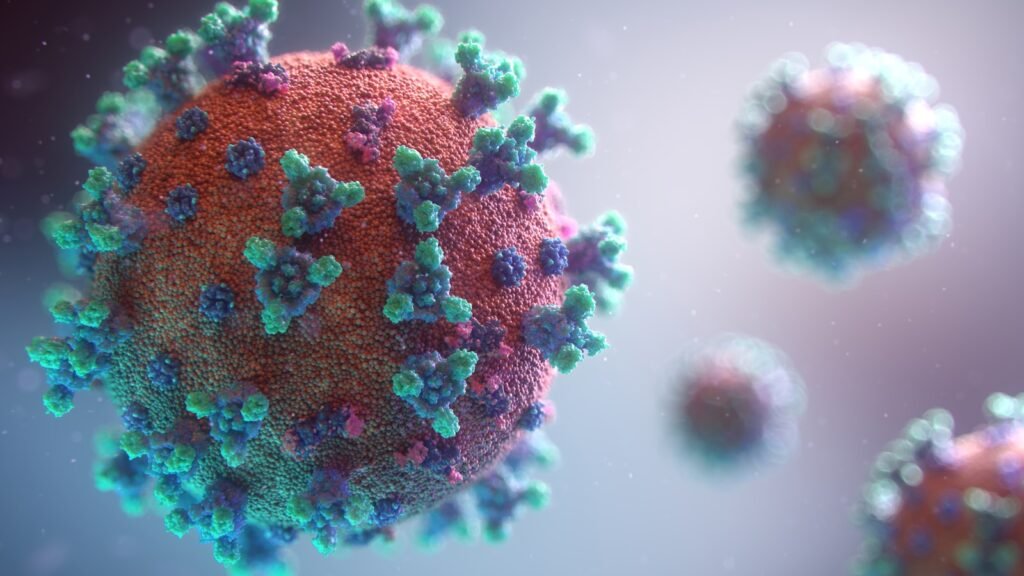Viruses are formidable adversaries in the world of health, capable of causing devastation on a global scale. Throughout history, several viruses have posed catastrophic threats to human life, shaping societies and challenging medical sciences. However, humanity has demonstrated resilience and ingenuity in overcoming these deadly pathogens. This article delves into some of history’s most lethal viruses and explores the strategies and advancements that helped us prevail.
The Bubonic Plague: The Black Death

The Black Death, caused by the bacterium Yersinia pestis, ravaged Europe during the 14th century and resulted in the deaths of an estimated 25 to 50 million people. Carried by fleas living on rats, this pandemic spread quickly, causing widespread panic and social upheaval. The plague was marked by swollen lymph nodes, fever, and black sores.
Overcoming the bubonic plague involved the development of quarantine practices. City officials began isolating ships and crews suspected of carrying the disease. Today, the plague is rare and can be treated with antibiotics if caught early.
Smallpox: The Conquered Killer

Smallpox, caused by the variola virus, has killed hundreds of millions of people over centuries. Characterized by fever and a distinctive skin rash, smallpox was particularly devastating because of its high mortality rate and its ability to spread easily.
The breakthrough came with Edward Jenner’s development of the smallpox vaccine in 1796, utilizing cowpox to confer immunity. This vaccination campaign eventually led to the complete eradication of smallpox in 1980, as declared by the World Health Organization (WHO), marking a significant victory in public health.
Spanish Flu: The 1918 Pandemic

The 1918 influenza pandemic, commonly known as the Spanish flu, infected a third of the world’s population and caused tens of millions of deaths. Unlike typical flu strains, the Spanish flu was particularly deadly to young, healthy individuals.
To combat this pandemic, public health measures such as quarantine, isolation, and improved sanitation were heavily enforced. Although there was no vaccine at the time, these efforts helped reduce transmission. Today, annual flu vaccinations and global monitoring systems help prevent and control influenza outbreaks.
HIV/AIDS: From Crisis to Control

First identified in the 1980s, the human immunodeficiency virus (HIV) quickly spread across the globe, leading to the acquired immunodeficiency syndrome (AIDS) and claiming millions of lives. The virus attacks the immune system, leaving individuals vulnerable to other infections and diseases.
Overcoming HIV/AIDS has been a long and ongoing battle. The development of antiretroviral therapy (ART) has transformed HIV from a fatal disease into a manageable chronic condition. Continued education, prevention efforts, and advancements in treatment have significantly reduced the impact of HIV/AIDS worldwide.
Ebola: Strides in Containment

The Ebola virus, first identified in 1976, causes severe bleeding and organ failure, with fatality rates reaching up to 90% in past outbreaks. The largest outbreak in West Africa between 2014 and 2016 highlighted the challenges in controlling the virus.
Advancements in overcoming Ebola include the development of effective vaccines and treatments, as well as improved strategies for outbreak containment, such as contact tracing and community engagement. The rapid deployment of these measures during subsequent outbreaks has significantly curbed the spread of the virus.
SARS and MERS: Lessons in Preparedness

Severe Acute Respiratory Syndrome (SARS) and Middle East Respiratory Syndrome (MERS) are coronaviruses that emerged in 2003 and 2012, respectively. Both caused severe respiratory illness and had high mortality rates.
Efforts to overcome SARS and MERS included international cooperation, swift public health responses, and research into vaccines and treatments. Lessons learned from these outbreaks helped prepare global health systems for future coronavirus threats, including COVID-19.
COVID-19: A Global Response

Undoubtedly the most impactful pandemic of the 21st century, COVID-19, caused by the novel coronavirus SARS-CoV-2, has affected millions worldwide since late 2019. Societies faced immense challenges due to its rapid spread and significant impact on health systems and economies.
Overcoming COVID-19 involved unprecedented global collaboration in scientific research and public health initiatives. The rapid development and distribution of vaccines have been crucial in managing the pandemic, alongside public health measures such as social distancing, mask-wearing, and hygiene practices.
Conclusion: Resilience and Innovation

Throughout history, humanity has faced formidable challenges from deadly viruses. Yet, through resilience, innovation, and collaboration, we have overcome these threats. Each outbreak has left a legacy of lessons that continues to inform our strategies in public health, scientific research, and global cooperation. As we move forward, these experiences fortify our ability to handle future viral challenges and safeguard the health of our global community.




